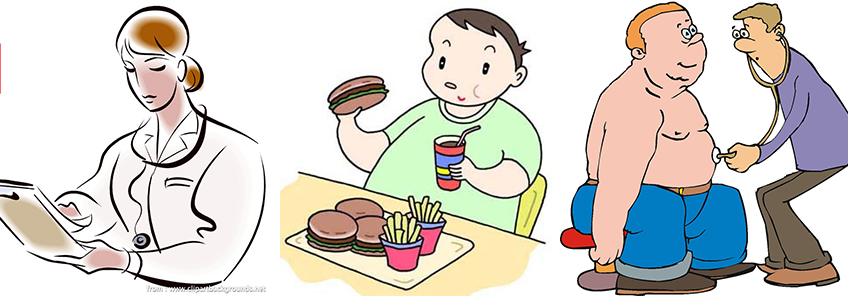Diabetes Mellitus

- Drinking water more than usual
- Going to bathroom to urinate more often
- Losing weight without effort
- Feeling very hungry or tired
- Cuts and wounds take longer time to heal
- Having blurry vision
- Tingling in your feet and hands
- Sometimes an undiagnosed DM can present with complications called diabetic ketoacidosis where not only your blood sugars are high, you will be severely dehydrated, lethargic or sometimes comatose, kidney damage and life threatening acidosis.
- Family history of diabetes in parents or siblings
- Overweight and obesity
- Age
- Sedentary lifestyle and lack of exercise
- Presence of other autoimmune diseases
- High blood pressure
- High cholesterol and triglycerides level
- Excessive alcohol consumption
- Cigarette smoking
- DM during pregnancy
- Certain medication like steroids
- Acute severe stress – these are usually transient
- Healthy diet: Dietary control is the most important thing for a patient with diabetes. A sample of some best and worst food for diabetic patients includes.
- Avoid: white rice, fine white flour, white bread, regular jam, and food with added sugar, fatty food.
- Best: Whole grain food, whole wheat, brown rice, food made with corn, vegetables, spinach, and fresh fruit.
- Exercise: Being physically active with regular exercise helps minimize cardiovascular risks.
- Lose extra weight.
- Limit your alcohol drinking.
- Monitor your blood sugar regularly.
- Take medicine, such as insulin injection or anti-diabetic tablets as your doctor has prescribed.
Diabetes Mellitus (commonly called diabetes) is a chronic disease where your blood sugar levels are persistently high. There is an important hormone called insulin in our body that keeps the blood glucose level within normal range. Insulin is produced by pancreas which is a gland located behind the stomach between the loops of small intestine. Insulin helps glucose to move into cells where it is utilised as a fuel to produce energy needed for various functions of the body. In diabetes, pancreas either doesn’t produce insulin enough insulin or your body becomes less responsive to insulin. Without enough insulin, glucose in the blood doesn’t move into the cells depriving them of fuel for energy production. In the long run a persistently elevated blood sugar level causes harm to heart, kidney, nerves, eyes, and legs.
Types, Causes and Risk Factors
There are mainly two types of diabetes: Type 1 Diabetes and Type 2 Diabetes. There are also other special types of diabetes based on the causes of damage to the pancreas.
Type 1 diabetes also called insulin dependent diabetes mellitus occurs when pancreas produces little or no insulin. The cells in the pancreas that produce insulin are destroyed. Therefore, insulin is needed from the beginning to control blood sugar in type 1 DM. And as the cells producing insulin are destroyed this disease remains throughout your life with no complete cure till date. Type 1 DM appears earlier in life compared to type 2. Most commonly diagnosed in people less than 20 years old. It accounts for 10% of overall diabetes population.
Type 2 diabetes occurs when pancreas doesn’t produce enough insulin or body becomes less sensitive to the insulin produced. The cells that produce insulin in pancreas are not destroyed and hence insulin is not required from the beginning to control blood sugar. It is commoner type of diabetes mellitus ( 90 % of all DM) and generally begins after age of 40. People with a family history of diabetes and who are overweight and obese may develop type 2 diabetes earlier. Since the cell producing insulin are intact, this type of DM can be managed with diet, weight reduction and exercise in the early stages. Subsequently they, need oral medication that stimulate insulin production from the pancreas. Over the years many people with type 2 diabetes need insulin from outside to keep blood sugar under control.
Symptoms
Some common symptoms of diabetes mellitus are:
Who is at risk for developing Diabetes Mellitus?
Following conditions increase your risk of developing diabetes mellitus:
Eating high sugar diet doesn’t cause diabetes but it may unmask an underlying predisposition to develop diabetes. It will most likely make your diabetes control difficult if you already have diabetes.
Diagnosis
Diabetes is diagnosed by measuring blood glucose level. The best way to diagnose diabetes is to check a blood sugar level after 10-12 hours of not eating anything called fasting blood sugar level. Normally it should be between 70-100 mg/dl. If it is more than 126 mg/dl, it is called diabetes. If you are already experiencing symptoms of diabetes mentioned above, then a blood glucose level can be checked randomly without fasting. If it is higher than 200 mg/dl then a diagnosis of diabetes is made. Sometimes you may have all the risk factors for diabetes but your blood sugar level are within normal range. In these situation, you many undergo a test called glucose challenge test that will help in making a diagnosis of diabetes or a condition called impaired glucose tolerance also known as prediabetes. Another test that helps to make a diagnosis is called HBA1C. This test tells us about the your average blood sugar in last 3 months.
Treatment
You should always consult with your doctor about the treatment plan. Type I diabetes invariably requires insulin injections. . In case of type II diabetes, your doctor will ask you to control your blood sugar with modification of diet, and later give you some tablets to control your blood sugar level.
These are the common things you need to follow when you have diabetes:



Send us your feedback on this article